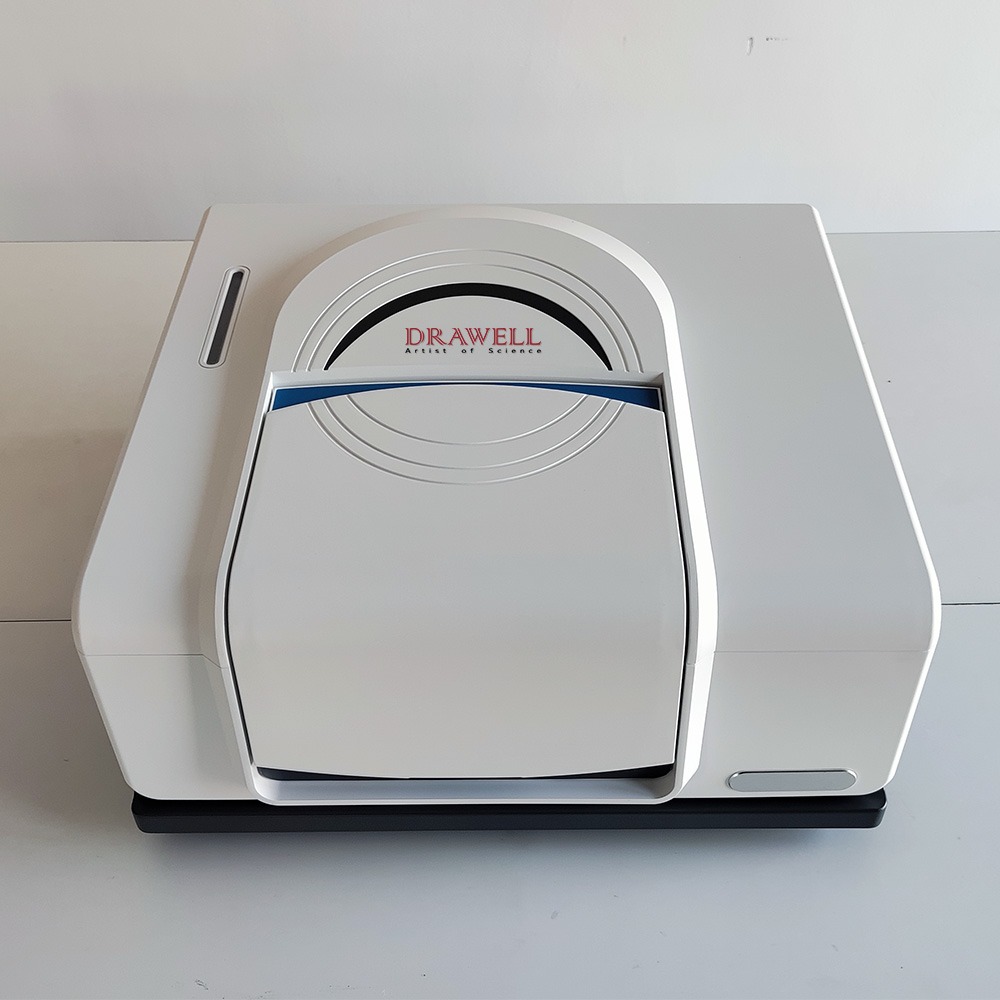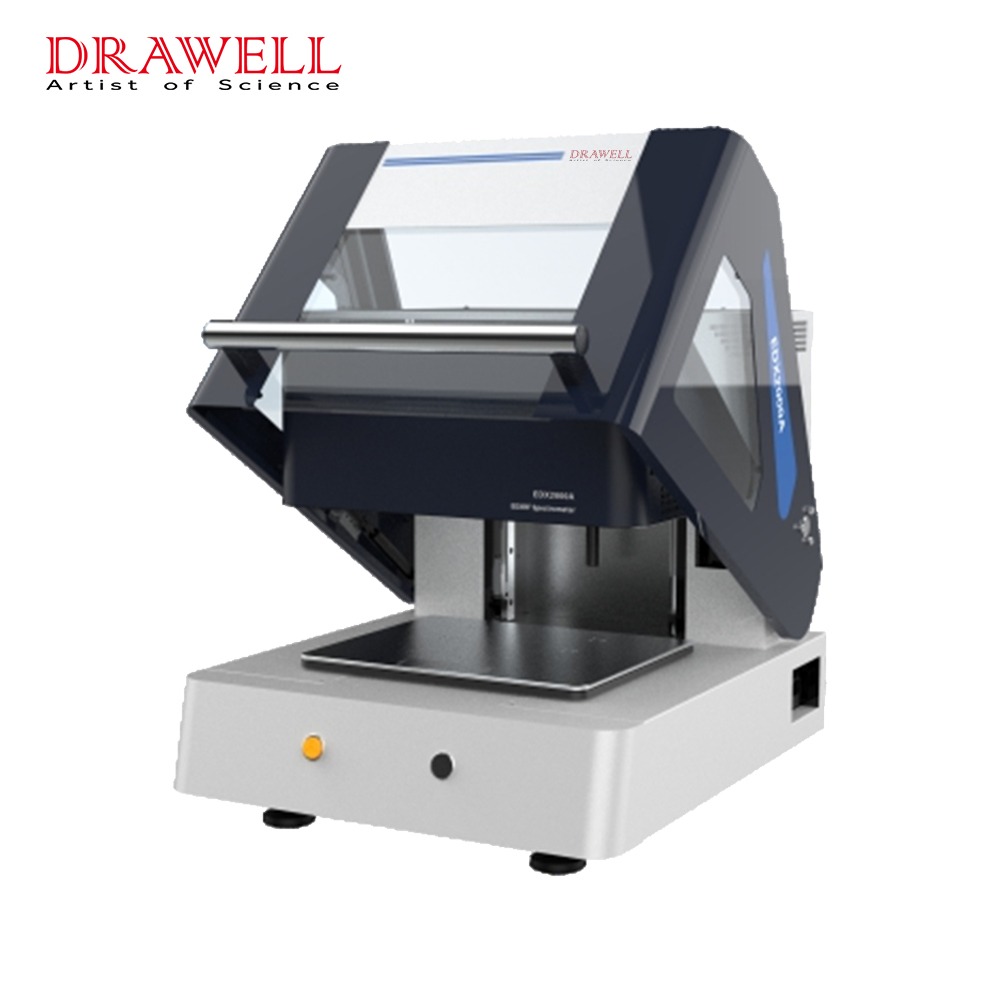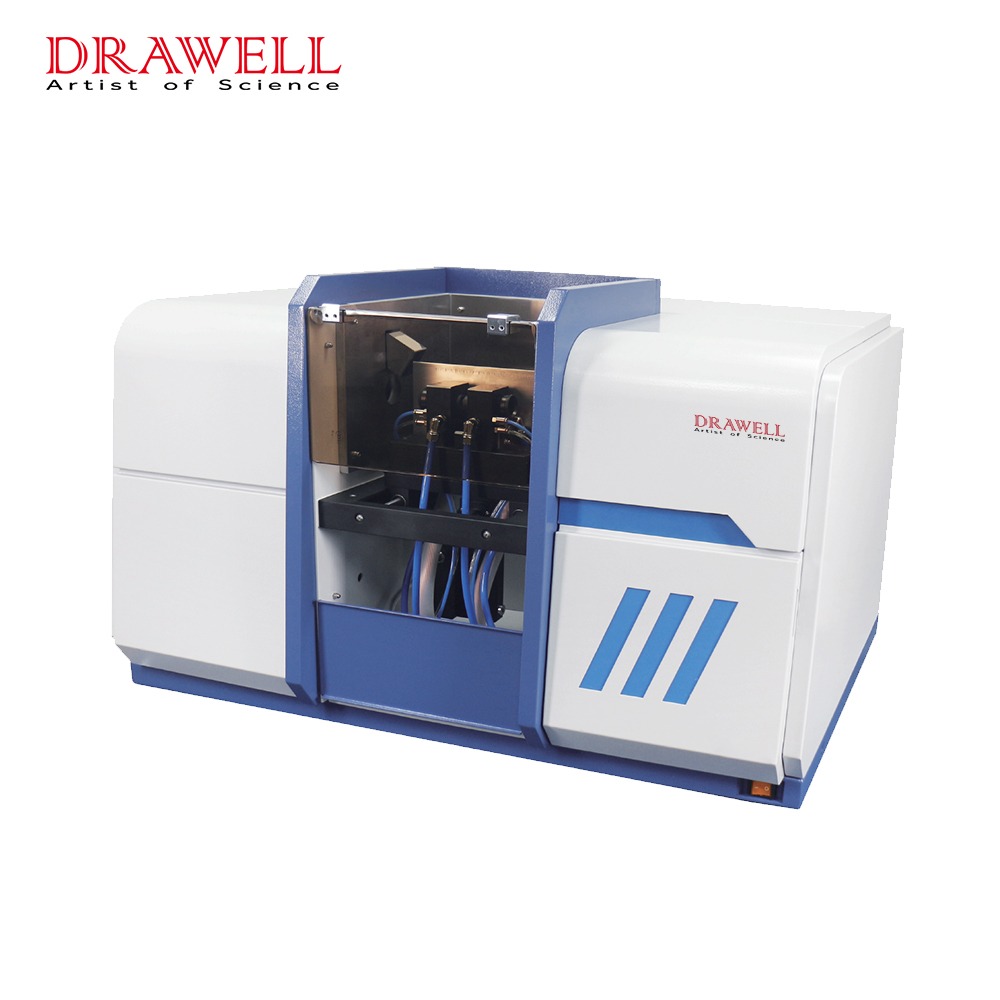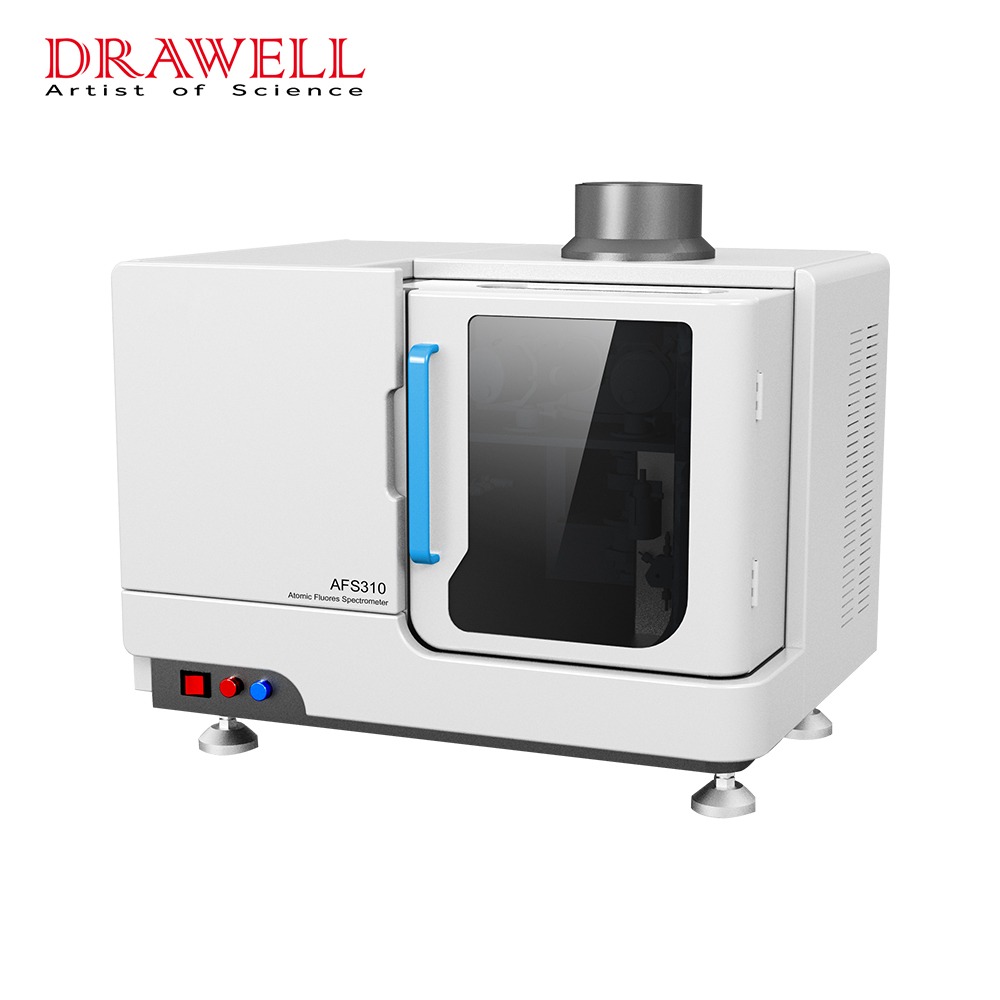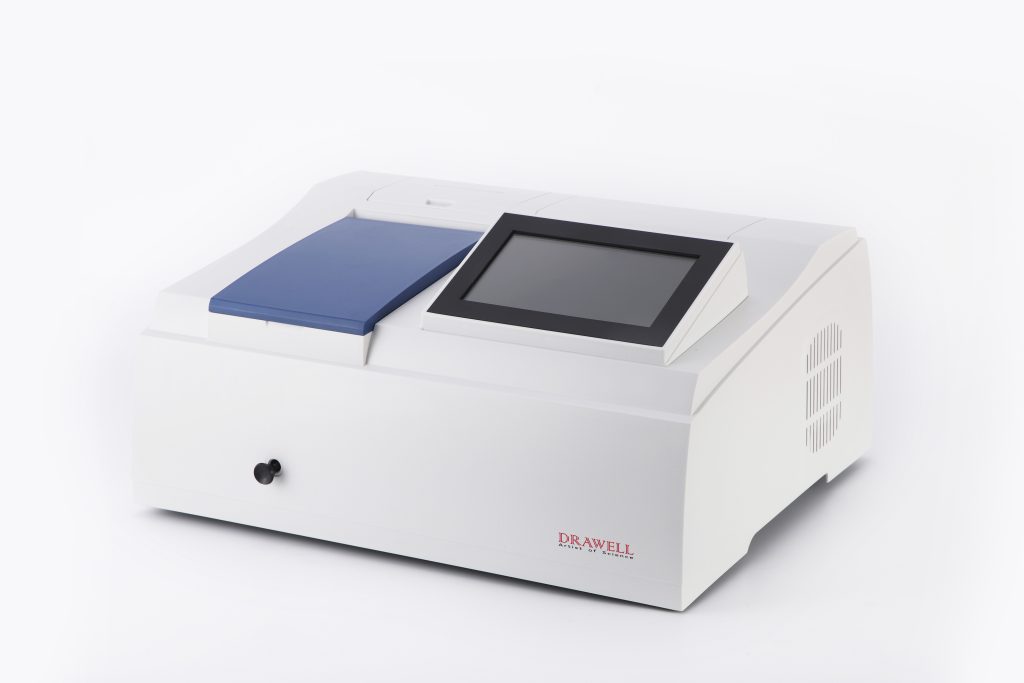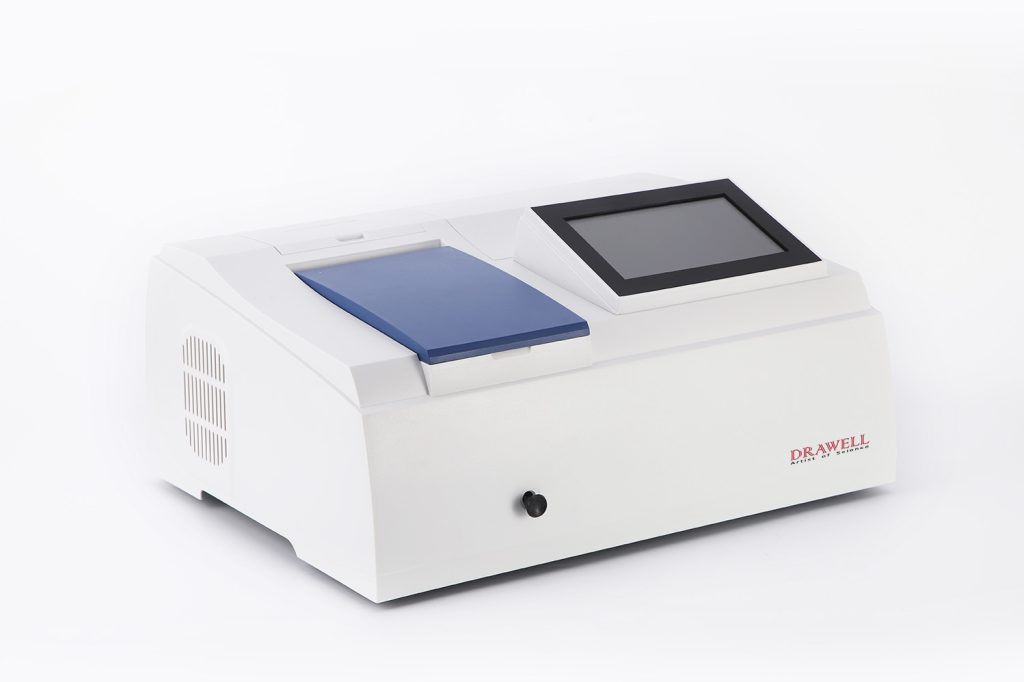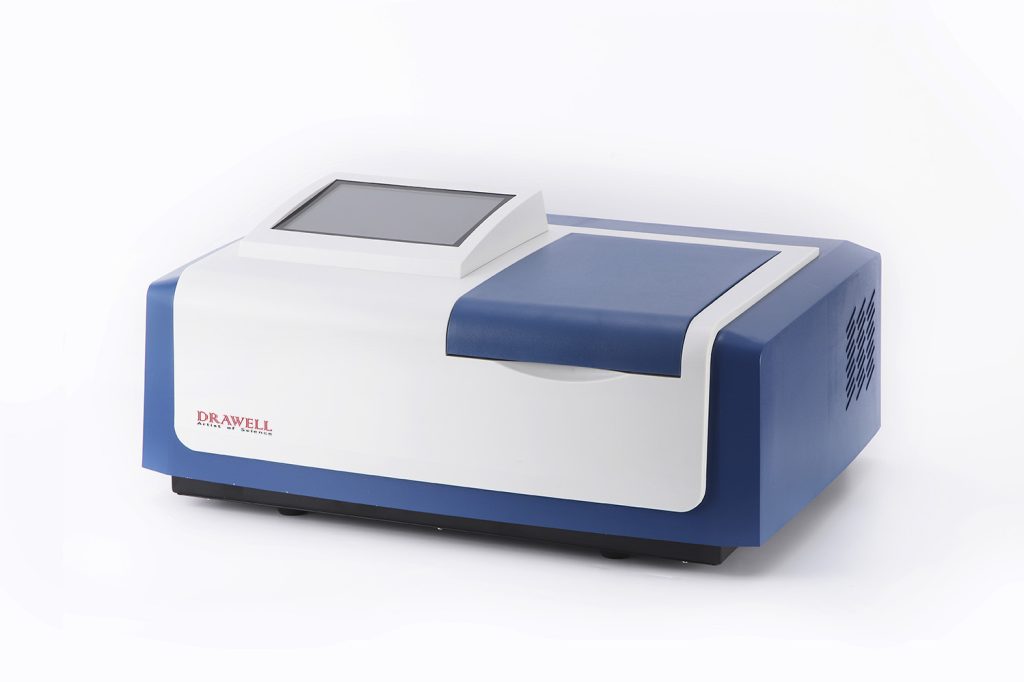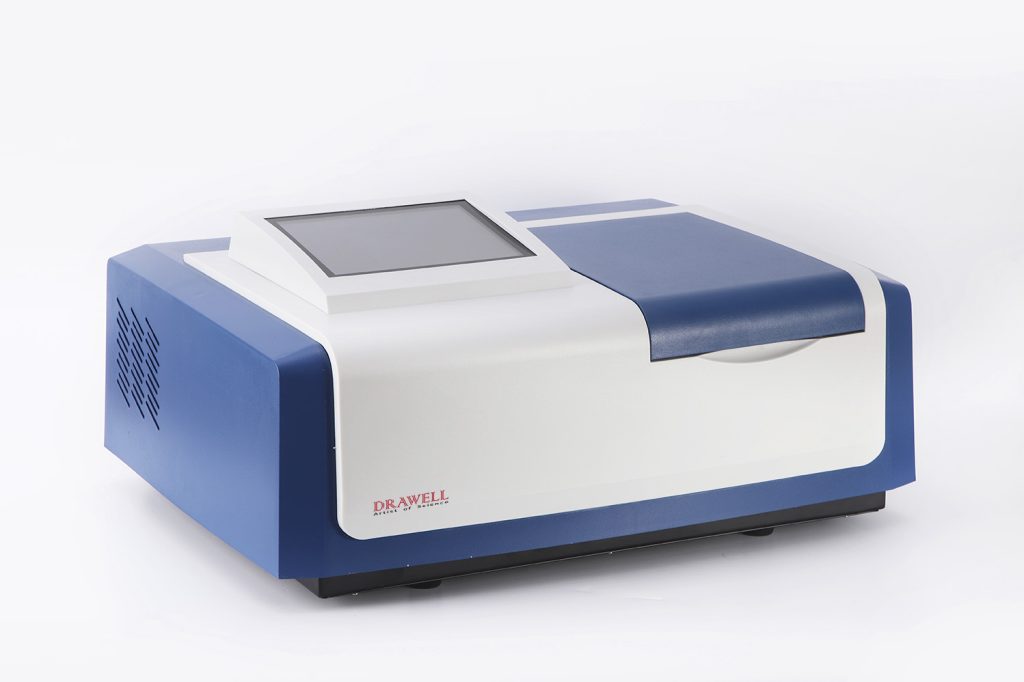A spectrophotometer is an instrument that takes advantage of the selective absorption of light by substances and uses purer monochromatic light as incident light to measure the absorption of light by substances, to perform qualitative or quantitative analysis of substances. Frequently used spectrophotometers include digital spectrophotometer, UV spectrophotometer, fluorescence spectrophotometer, etc. Measurement errors often occur during use. How do these errors occur?
Error caused by the performance of the instrument itself
- Deviation from the Contrast Ear Law of Polychromatic Light
The prerequisite for the establishment of Beer’s law is that the light emitted by humans is monochromatic. However, even a spectrophotometer with a dual monochromator can only obtain nearly monochromatic light, and cannot obtain pure monochromatic light. It still contains a narrow light passband and has the properties of polychromatic light. The polychromatic light will cause a positive or negative deviation from Beer’s law.
In general, the spectral bandwidth of an ultraviolet spectrophotometer is generally 1nm or 2nm, and the minimum adjustable slit is 0.1nm; the bandwidth of a visible spectrophotometer is 6nm, or even more than ten nanometers.
The spectral bandwidth should be as small as possible. But as the spectral resolution increases, the sensitivity of the instrument will decrease. Therefore, the influence of various conditions should be considered when selecting the instrument. For example, when the concentration of the solution is small and the light is monochromatic, and the color of the light is purer, it can be approximately considered to comply with Beer’s law.
- The influence of stray light
Stray light refers to other wavelength components that enter the detector outside the spectral bandwidth of the wavelength to be measured, and it is the main source of error in the spectrum measurement.
The reasons are the dispersion element of the spectrophotometer, the mirror, the lens, and the dust on the inner wall of the monochromator. At the edge wavelength of the working band of the spectrophotometer, due to the low transmittance of the monochromator, the radiation intensity of the light source, and the sensitivity of the detector, the influence of stray light is more significant.
The upper limit of stray light limit instrument analysis can cause serious measurement errors. In actual work, in quantitative analysis, the absorbance of the sample is generally measured at or near the absorption peak. If there is stray light at the analysis wavelength, the sample’s transmittance rate is small, and most of the stray light is transmitted, making the measured absorbance lower than the true absorbance.
- The influence of instrument noise on measuring T
Instrument noise is also an important indicator of instrument error. It represents the ability of the instrument to prepare to dilute solutions. It is an unwanted signal superimposed on the analysis signal to be measured. Scan the 100%T and 0%T lines to observe the absolute noise level of the spectrophotometer. If the instrument is noisy, the smaller measurement signal will be masked. Generally, twice the noise is used to express the sensitivity of the instrument.
- Wavelength and absorbance accuracy
Each value of the measured sample should be measured at a specific wavelength. If the wavelength error is large, the measured value will be inaccurate.
Selection of measurement conditions
Selection of reference solution and solvent
The measurement of the spectrophotometer uses the light intensity of the reference cell as the light intensity of the human to determine the absorbance of the sample. First, adjust the instrument so that the absorbance of the solution passing through the reference cell is zero, and then let the same light pass through the sample, So that the absorbance truly reflects the concentration of the substance to be tested, so the choice of the reference solution is very important.
If only the reaction product of the substance be tested and the developer is absorbed, pure solvent or distilled water can be used as the reference solution. If the developer has color and absorbs at the measuring wavelength, use the developer solution as the reference solution. The amount of developer and other reagents added should be the same as the amount added to the sample.
If the color of other components in the sample interferes with the measurement, and the developer used has no color, use the sample solution without the developer as the reference solution.
The correct selection of the appropriate solvent plays an important role in improving the accuracy of the analysis. To reduce the influence of impurities in the solvent, a high-purity solvent should be selected; the solvent should not chemically react with the test substance; the test substance must have a certain solubility in the solvent; within the measured wavelength range, if the solvent itself does not For absorption, attention should be paid to the shortest available wavelength of common solvents; when a solvent with high volatility is used, the absorption cell should be covered during the measurement.
Selection of test wavelength
When using a spectrophotometer to measure the solution, you first need to select the appropriate measurement wavelength. The selection is based on the absorption curve of the tested solution. In general, we always choose the maximum absorption wavelength as the measurement wavelength, which can improve sensitivity.
In some cases, the maximum absorption peak is very sharp, the absorption is too large, or there is interference nearby, the maximum absorption wavelength cannot be selected, and the other wavelengths in the absorption curve must be selected for determination under the condition of ensuring a certain sensitivity (the curve is more Corresponding wavelength on the flat surface) to eliminate interference. Drawing the absorption curve is an effective means and method for correct wavelength selection.
In general, there are two reasons for the error of the spectrophotometer: the error caused by the quality and manufacturing process of the instrument itself, and the error caused by different measurement conditions. There are many different types of spectrophotometers on the market, so choosing the spectrophotometer that suits you is the most important. Of course, if you need to know more about spectrophotometers, you can read this article- You need to Know These Things about spectrophotometer!
At the end of the article, I sincerely recommend Drawer Scientific’s spectrophotometers. Their spectrophotometers include digital spectrophotometer, UV spectrophotometer, fluorescence spectrophotometer, etc. You can buy products that suit you according to your needs. If you have any doubts about choosing a spectrophotometer, you can also consult the engineers and they will be happy to help you.
Tips: If you need to buy a spectrophotometer, please buy a suitable spectrophotometer according to your needs.

